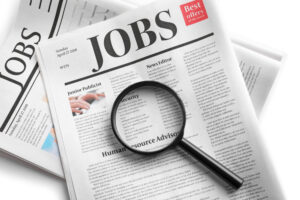The NFIB Small Business Optimism Index increased 0.9 of a point in July to 91.9, marking the 19th consecutive month below the 49-year average of 98. Twenty-one percent of owners reported that inflation was their single most important problem in operating their business, down three points from June.
“With small business owners’ views about future sales growth and business conditions dismal, owners want to hire and make money now from solid consumer spending,” said NFIB Chief Economist Bill Dunkelberg. “Inflation has eased slightly on Main Street, but difficulty hiring remains a top business concern.”
Although state-specific data isn’t available, NFIB State Director Chad Heinrich said, “With the state legislature finally adjourned from its regular session, small business owners can continue focusing on operating their businesses without worry of new costly mandates or higher taxes coming from our state government. We are thankful for the pro-small-business legislators willing to stand against job-killing tax increases and regulatory mandates on our small businesses in Arizona.”
Key findings include:
- Owners expecting better business conditions over the next six months improved 10 points from June to a net negative 30%, 31 percentage points better than last June’s reading of a net negative 61%. This is the highest reading since August 2021 but historically very negative.
- Forty-two percent of owners reported job openings that were hard to fill, unchanged from June but remaining historically very high.
- The net percent of owners raising average selling prices decreased four points to a net 25% seasonally adjusted, still a very inflationary level but trending down. This is the lowest reading since January 2021.
- The net percent of owners who expect real sales to be higher improved two points from June to a net negative 12%, a very pessimistic perspective.
As reported in NFIB’s monthly jobs report, 61% of owners reported hiring or trying to hire in July, up two points from June. Of those hiring or trying to hire, 92% of owners reported few or no qualified applicants for the positions they were trying to fill. Thirty-three percent of owners reported few qualified applicants for their open positions and 23% reported none.
Fifty-five percent of owners reported capital outlays in the last six months, up two points from June. Of those making expenditures, 38% reported spending on new equipment, 22% acquired vehicles, and 15% improved or expanded facilities. Eleven percent spent money on new fixtures and furniture and 6% acquired new buildings or land for expansion. Twenty-seven percent of owners plan capital outlays in the next few months.
A net negative 13% of all owners (seasonally adjusted) reported higher nominal sales in the past three months, down three points from June and the lowest reading since August 2020. The net percent of owners expecting higher real sales volumes improved two points to a net negative 12%.
The net percent of owners reporting inventory gains was unchanged at a net negative 3%. Not seasonally adjusted, 14% reported increases in stocks and 14% reported reductions. A net negative 4% of owners viewed current inventory stocks as “too low” in July. By industry, shortages are reported most frequently in retail (15%), transportation (14%), manufacturing (11%), and services (9%). Shortages in construction (6%) have been reduced. A net negative 2% of owners plan inventory investment in the coming months, up one point.
Falling four points from June, the net percent of owners raising average selling prices dropped to a net 25% (seasonally adjusted), the lowest since January 2021. Twenty-one percent of owners reported that inflation was their single most important problem in operating their business. Unadjusted, 14% reported lower average selling prices and 40% reported higher average prices. Price hikes were the most frequent in finance (53% higher, 13% lower), retail (52% higher, 10% lower), wholesale (44% higher, 15% lower), and construction (43% higher, 6% lower). Seasonally adjusted, a net 27% plan price hikes.
Seasonally adjusted, a net 38% reported raising compensation. A net 21% plan to raise compensation in the next three months, down one point from June. Ten percent of owners cited labor costs as their top business problem, up two points. Twenty-three percent of owners said that labor quality was their top business problem.
The frequency of reports of positive profit trends was a net negative 30%, down six points from June. Among owners reporting lower profits, 30% blamed weaker sales, 19% blamed the rise in the cost of materials, 18% cited labor costs, 9% cited lower prices, 5% cited usual seasonal change, and 4% cited higher taxes or regulatory costs. For owners reporting higher profits, 44% credited sales volumes, 34% cited usual seasonal change, and 9% cited higher selling prices.
Three percent of owners reported that all their borrowing needs were not satisfied. Twenty-five percent reported all credit needs were met and 62% said they were not interested in a loan. A net 6% reported their last loan was harder to get than in previous attempts. Four percent reported that financing was their top business problem. A net 23% of owners reported paying a higher rate on their most recent loan. To date, Fed policies raising interest rates and reducing their portfolio have not had a significant impact on small firms.
The NFIB Research Center has collected Small Business Economic Trends data with quarterly surveys since the fourth quarter of 1973 and monthly surveys since 1986. Survey respondents are randomly drawn from NFIB’s membership. The report is released on the second Tuesday of each month. This survey was conducted in July 2023.

















Speak Your Mind
You must be logged in to post a comment.